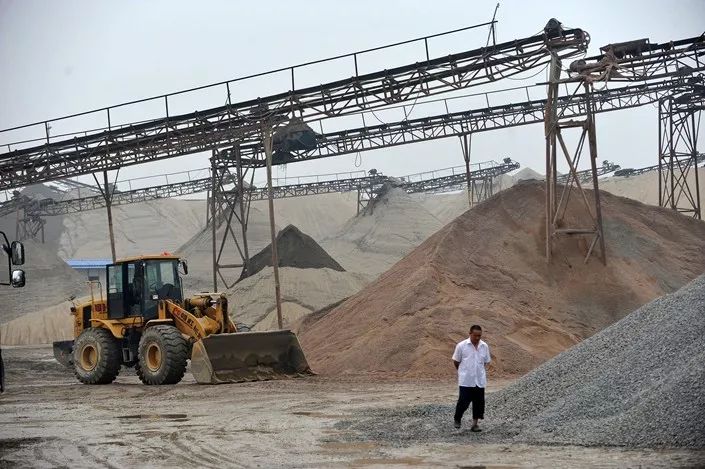
砂石是建筑行业重要原料之一。随着砂荒在全国蔓延,各个区域都有地方政府动用行政手段,干预当地砂石市场。
近日,陕西省紫阳县出台《关于规范全县砂石供应管理的公告》这份《公告》以行政命令的方式提出,从5月6日至8月30日,紫县水利局将根据实际需求,统一向县内供砂企业下达订单,辖区内各采砂企业要服从指挥,按照订单数量和时间要求配送砂石,确保当地重点项目建设用砂需求。
Local Governments Working Hard to Keep Sand From Slipping Through Their Fingers
By Fang Zuwang and David Kirton

A sand and gravel plant on the Yangtze river in Wuhan, Hubei province in May 2015. Photo: VCG
Several local governments are going to great lengths to control their supplies of sand and gravel in the wake of a crackdown to curb the environmental damage from mining these essential building materials.
The recent trade and price restrictions on these components illustrate the effects of a major nationwide crackdown on environmentally destructive sand and gravel mining that has caused shortages across the country, leading to a boom in overseas imports.
Last week, authorities in Ziyang county in the northwestern province of Shaanxi announced that the country’s water bureau will monitor all movements of the sand and gravel until the end of September, making it illegal to sell sand outside the region, with sand and gravel being reserved for key projects. The bureau will also control the prices of the materials.
Similarly, authorities in Wan’an county in Southeast China’s Jiangxi province, announced in April that buyers of these materials must first receive government approval slips, and are not allowed to resell to other buyers — a policy decision reminiscent of the days of the planned economy.
Sand and gravel form the bedrock of China’s rapid urban and infrastructure development, with the country accounting for over half of the world’s supply and demand. Demand rose by 540% over the last two decades, according to a U.N. Environment report released last week.
The best building materials tend to be extracted from major rivers like the Yangtze, but often at a great environmental cost. “The increasing volume of aggregates extracted, often illegally, from riverine and marine ecosystems results in river and coastal erosion, [and threatens] freshwater and marine fisheries and biodiversity,” the report noted.
In the face of such threats across China’s waterways, the Ministry of Water Resources in June launched a major nationwide crackdown on illegal mining near fragile rivers. Yet this has led to sand and gravel shortages in some regions, with prices for both rising by about 25% last year in the Yangtze River Basin region, the country’s main production area.
While the government crackdown on illegal mining has depressed the supply of sand and gravel, rising prices also incentivize further illegal activity by increasing the potential profits to be had, according to a recent piece in the Sichuan Daily reproduced on the website of industry body China Sandstone. Last year, authorities in the southwestern province of Sichuan arrested 168 people and investigated four officials in relation to illegal sand and gravel mining, seizing 62.6 million yuan ($9 million) of assets the report said.
The rising prices are also leading to a boom in imports from overseas, particularly in the southern island province of Hainan. The region is expected to need around 28.48 million cubic meters (1.01 billion cubic feet) of sand each year to support of its planned major free trade zone, but the province can only supply less than 10 million cubic meters. With this in mind, state-owned Hainan Development Holdings Co. Ltd. imported sand from the Philippines for the first time in February, while authorities in the provincial city of Danzhou announced earlier this year that the city plans to import 2 million cubic meters of sand from Malaysia this year.
Similarly, even the eastern province of Zhejiang, located on the Yangtze River Delta, imported 556,000 tons of sand from Malaysia in February, while the volume of sand and gravel imported via Guangzhou rose 70.9% in the first quarter of this year, according to the Guangzhou Port Group.
A previous version of this story mistakenly stated that sand and gravel are raw materials for cement. They are not, but rather they are key components in concrete.
Contact reporter David Kirton
([email protected])
Rural Migrant Worker Population Grows at Slowest Pace in 10 Years
Learn More






